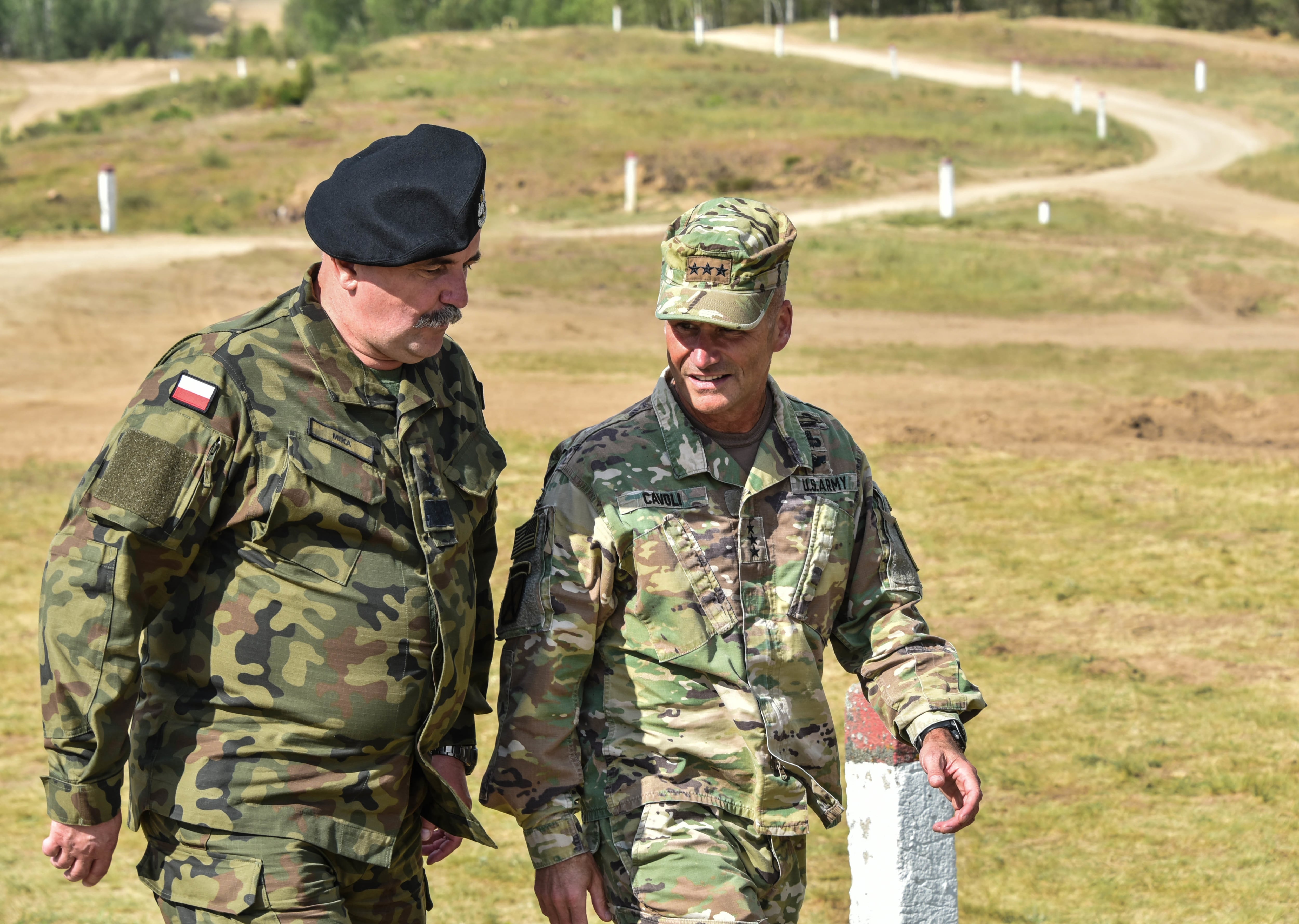COLOGNE, Germany — The first of five new NATO surveillance drones began test flights over the Mediterranean Sea this month, nudging the alliance toward a new capability meant to relieve the demand for U.S. equipment.
The flights took off from Sigonella air base in Sicily, Italy, the future headquarters of the Northrop Grumman-made Global Hawks of the Alliance Ground Surveillance program. The planes are owned by a collective of 15 NATO members.
The alliance’s supreme allied commander for Europe, a job currently filled by U.S. Air Force Gen. Tod Wolters, has tasking authority over the new capability. The North Atlantic Council also gets a say in cases of missions outside of NATO territory.
The first two drones arrived late last year. Officials expect the rest of the fleet to make the trip from the manufacturer’s facilities in Palmdale, California, throughout the summer.
Earlier this spring, travel restrictions spurred by the spread of the novel coronavirus had raised the possibility of a delay in getting the initial plane approved for its flight schedule. But the Italian government allowed a team of Northrop specialists into Italy in late May for acceptance testing, a key step in obtaining an airworthiness certificate for the drone.
“COVID-related delays ended up only being a few weeks, but nothing that significant,” Camille Grand, NATO’s assistant secretary general for defense investment, told Defense News in an interview, referring to the coronavirus disease. “We are now moving to a pattern of regular flight to enable the force to use the drone.”
Officials have been tight-lipped about exactly where they intend to use the aircraft once they are fully operational.
RELATED

“You can imagine missions of looking into the situation on NATO’s borders,” Grand said. “Both in the south, in the Middle East or the east. The drones enable you to collect intelligence beyond your airspace.”
While the initial aircraft has already completed at least one nine-hour flight over the Mediterranean Sea, it remains to be seen if the the aircraft can get clearance from Italian regulators to fly over land, where air traffic is more crowded and a mishap could be catastrophic.
The general idea is to use the Italian airworthiness approval to fly anywhere. “The beauty of the European airspace is that once your are certified in Italy, you can fly across the European airspace,” Grand said.
He noted that the certification currently in effect is provisional, and that the scope of the process is “likely to expand over time.”
For now, high-flying military surveillance drones traversing the continent must obtain permission from national airspace authorities for a restricted flight corridor to protect nearby civilian traffic. Such is the case, for example, when U.S. unmanned aircraft fly reconnaissance missions close to the Baltics.
The Alliance Ground Surveillance program’s ambition is to “lift any limitations,” Grand said. “It is a very interesting and fascinating challenge because it is the first time ever that we are incorporating those Global Hawks in what is usually a crowded airspace on a permanent basis.”
Sebastian Sprenger is associate editor for Europe at Defense News, reporting on the state of the defense market in the region, and on U.S.-Europe cooperation and multi-national investments in defense and global security. Previously he served as managing editor for Defense News. He is based in Cologne, Germany.






